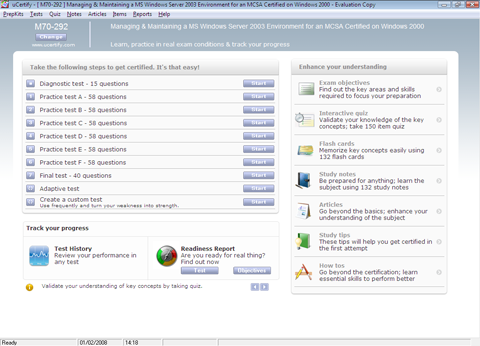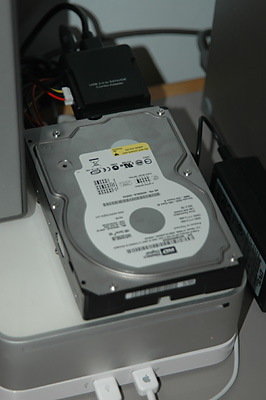This content is 16 years old. I don't routinely update old blog posts as they are only intended to represent a view at a particular point in time. Please be warned that the information here may be out of date.
Last week I wrote about having scraped through the first of two exams needed to update my MCSE from 2000 to 2003 and this morning I passed the second by an equally narrow margin. Whilst I’m pleased to have passed the Planning, Implementing and Maintaining a Microsoft Windows Server 2003 Environment for an MCSE Certified on Windows 2000 exam (exam 70-296), and am similarly glad that I found it challenging (i.e. worthwhile), I did sail a little close to the wind – and that wasn’t for lack of preparation either. So what happened?
I’ve worked with Windows NT since 1995, been an MCP since 1998 (and MCSE since 1999) worked with Active Directory since NT 5.0 beta 2 and generally have a fair amount of Microsoft Windows Server design and implementation experience in a variety of organisations. Even though I’ve remained technical, it’s inevitable that as I progress in my career, I spend more time managing and less time doing – meaning that I do not have a huge amount of recent operational or administrative experience. So, in order to upgrade my MCSE I needed to refresh my knowledge of the key concepts without re-learning everything from scratch.
With that in mind, and the impending withdrawal of the MCSE 2000-2003 upgrade exams, last summer, I bought a Microsoft Press Training Kit entitled Upgrading your Certification to Microsoft Windows Server 2003. It’s a weighty tome and includes evaluation software, eBooks and a readiness review suite from MeasureUp. It’s actually a really good purchase but, at 1100 pages and almost 2.5kg, I found it too large (physically) to keep lugging it around with me and, despite the title, it seems to be targetted at people who are setting out on the MCSE path for the first time.
Then, a few months back, I used an practice test from pass4sure to help prepare for MCTS exam 70-624. I passed the exam, but the software was Java-based (and the installer failed to recognise that my system already had Java installed and tried to install it again), was full of bugs and, at $79.99 for just 53 questions, I felt that it was very poor value for money. So, when uCertify asked me to review their PrepKits I was interested to compare them with my previous experiences.
uCertify kindly provided review copies of the PrepKits for exams 70-292 and 70-296 and, from the moment I installed them, I could see that the quality was way above my previous experience. No buggy installer – these went straight onto my Vista system with no issues, and I was greeted with a professional interface. Unlike the pass4sure practice tests, there were a few hundred questions (albeit with a fair amount of repetition – I calculated about 15% appeared in multiple practice tests) and tests were available as pre-defined practice tests, adaptive tests, custom tests (for example, just the questions that have previously be answered incorrectly), or an interactive quiz. There was also a complete run-down of the exam objectives and other study aids including flash cards, study notes and articles. Finally, the software allows the ability to view test history and to evaluate readiness using the built-in reporting tools.

I set to work on the practice tests, and found that there were two possible modes – test mode (with feedback at the end) and learn mode, whereby a fairly detailed explanation was available on request after answering each question. For some of the questions, I did not (and still do not) agree with the answers provided but the tool also includes the ability to provide feedback to uCertify and on at least one question I could view the feedback that others had provided. I also spotted quite a few grammatical and spelling errors – one was even in the interface itself so occurred on multiple questions.
Even though the general quality of the PrepKit software is high, there are some very obvious bugs. On my Windows Vista system I found that if I paused a test and then cancelled the pause, the clock did not start counting again – but that was actually useful because in learn mode there is not a lot of time by default (58 questions in 60 minutes) to take in the information. I also had a problem whereby the software lost my exam history – a minor annoyance, but it did effectively prevent me from retesting using just the questions I had answered incorrectly.
So, the software generally is not bad – it has a few issues but no show-stoppers. But what about its effectiveness? Taking exam 70-292 as an example, I saw my scores increase but I do wonder if, due to the repetition of the questions, I was actually learning the answers to the PrepKit tests rather than applying the knowledge gained in order to answer the question correctly (the difference may be subtle – but it is significant). This was particularly evident when I moved on to the PrepKit for exam 70-296, where there was some repetition of questions from the PrepKit for exam 70-292 (unsurprising as the exam objectives also overlap) and I consistently scored above 80% (with most tests above 90%).
My theory about learning the answers rather than learning the key concepts that are required to answer the questions correctly appears to be born out in my results from the real exams. The Microsoft NDA prevents me from discussing their content but I do have to wonder if, when I can consistently score above 90% in a practice test – even with the final test – which is intended to be more difficult than the vendor exam – how come I barely scraped a pass score in the real thing?
So, to summarise – do I think the uCertify PrepKits are worth the money? Probably. Will they prepare you to pass the exam? Possibly. Microsoft/Prometric are currently offering free exam insurance (Second Shot) and, in any case, uCertify offer their own money-back guarantee but, based on my experience, the PrepKits form just one part of an overall preparation strategy – and my usual method of re-reading course materials and writing my own notes seems to work better for me.
You can try the uCertify PrepKits for yourself – and I’d be interested to hear how people get on. Demonstration versions can be downloaded for free and access to the full PrepKit is unlocked with a license key costing around $59.99 with discounts for multiple purchases. It’s worth noting that the uCertify PrepKits are not just for Microsoft certifications either – there are PrepKits available for a variety of vendors with further details available at www.ucertify.com.
[Update 20 February 2008: You can get 10% off the uCertify PrepKit of your choice using the discount code MARWIL]


 Although I have recovered the data to another drive,
Although I have recovered the data to another drive,